The Art of Kazakh Eagle Hunting: Tradition, Culture, and Practice in Western Mongolia
Eagle hunting, a revered tradition among the Kazakh people of western Mongolia, is a practice steeped in history and cultural significance. Known locally as “burkitshi” (eagle hunter), this ancient art is more than just a method of hunting; it embodies a deep connection between the hunter, the eagle, and the natural world. Here’s an in-depth look at the practice of eagle hunting, its origins, techniques, and cultural practices.
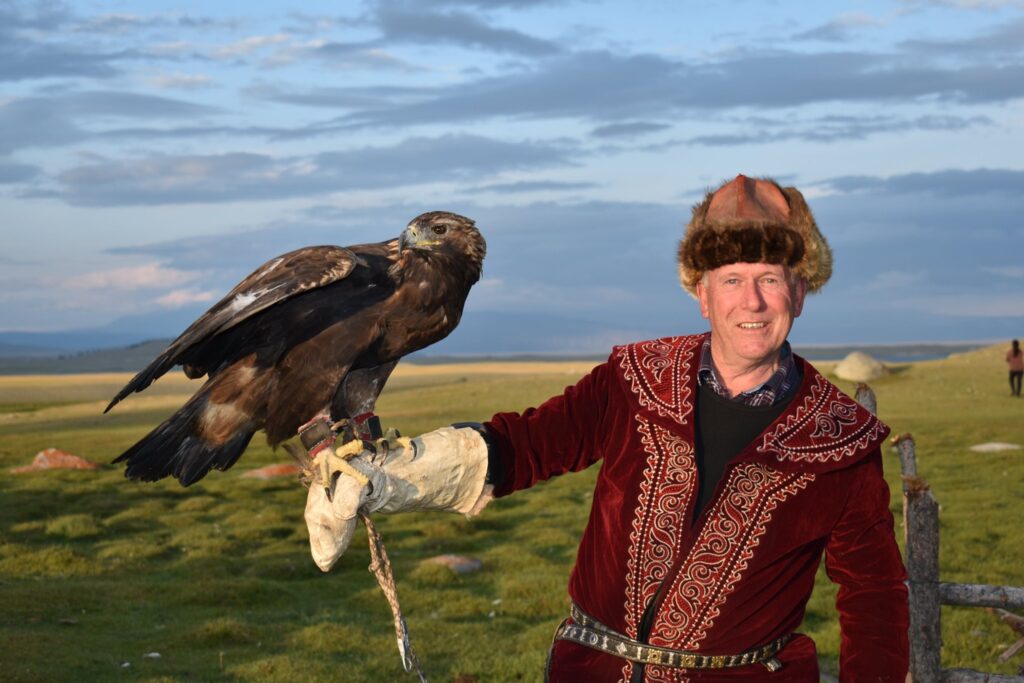
The Origins of Eagle Hunting
Historical Background: The tradition of eagle hunting among the Kazakhs dates back over 2,000 years. Historical records and oral histories suggest that eagle hunting was practiced by various nomadic cultures in Central Asia. The Kazakhs, in particular, have maintained and refined this tradition over centuries, passing it down through generations.
Terminology: The term “eagle hunter” is commonly used in the West, but it is worth noting that in Kazakh, the practice is referred to as “burkitshi.” The term “falconry” is often used in Western contexts to describe similar hunting practices with birds of prey, but it is distinct from eagle hunting. Falconry typically involves hunting with falcons, which are different in behavior and training from eagles. The Kazakh eagle hunting tradition is unique and specifically involves golden eagles, which are trained and used for hunting purposes.
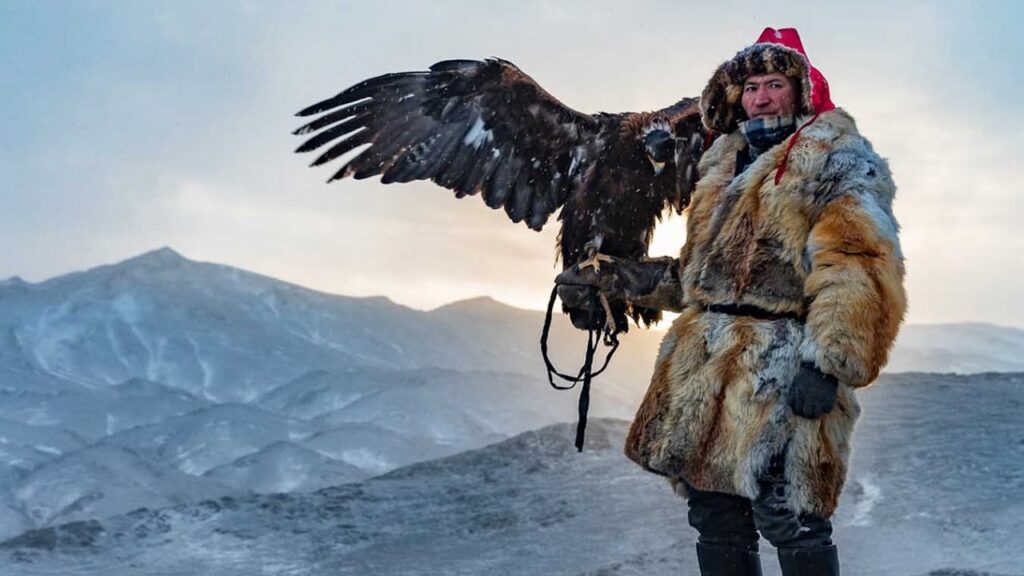
The Practice of Eagle Hunting
Training the Eagles: Golden eagles are the primary birds used in Kazakh eagle hunting. The training process begins when the eagles are young, often in their first or second year of life. Hunters, or “burkitshi,” raise and train the eagles with great care and attention. The training involves establishing a bond between the hunter and the eagle, teaching the bird to respond to commands, and developing its hunting skills.
Hunting Techniques: The main target for eagle hunting is the fox, which is considered a valuable prey due to its fur. The hunting process begins with the hunter releasing the eagle from a perch or from a horse, and the bird then pursues the fox. The eagle’s keen eyesight and powerful talons make it an effective predator. When the eagle catches the fox, the hunter retrieves both the bird and the prey.
Cultural Significance: Eagle hunting is more than a means of subsistence; it is a cultural practice that embodies the Kazakh way of life. It represents a deep respect for nature and the animals with whom the Kazakhs share their environment. The practice is often associated with festivals and competitions, where burkitshi demonstrate their skills and the strength of their eagles.
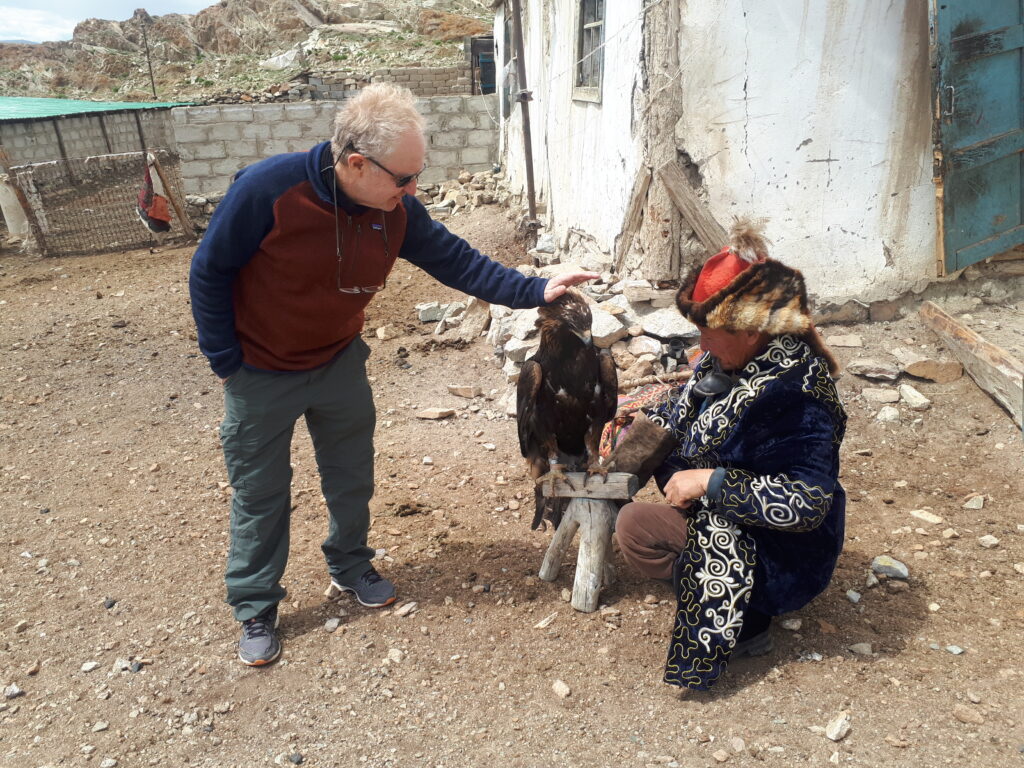
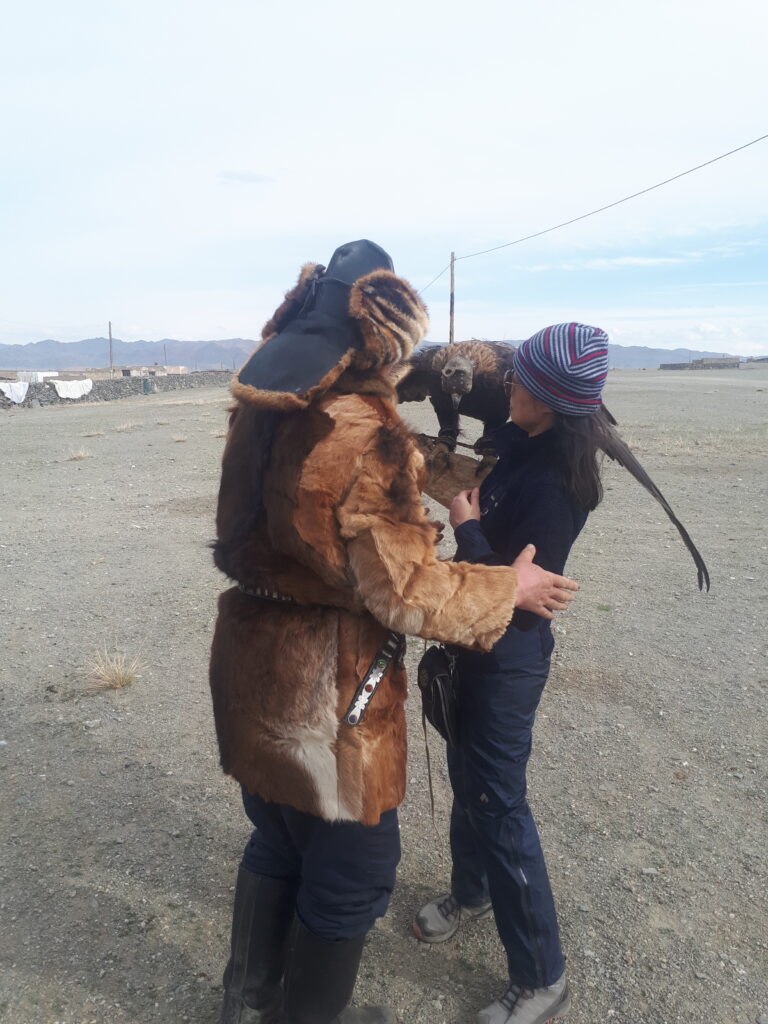
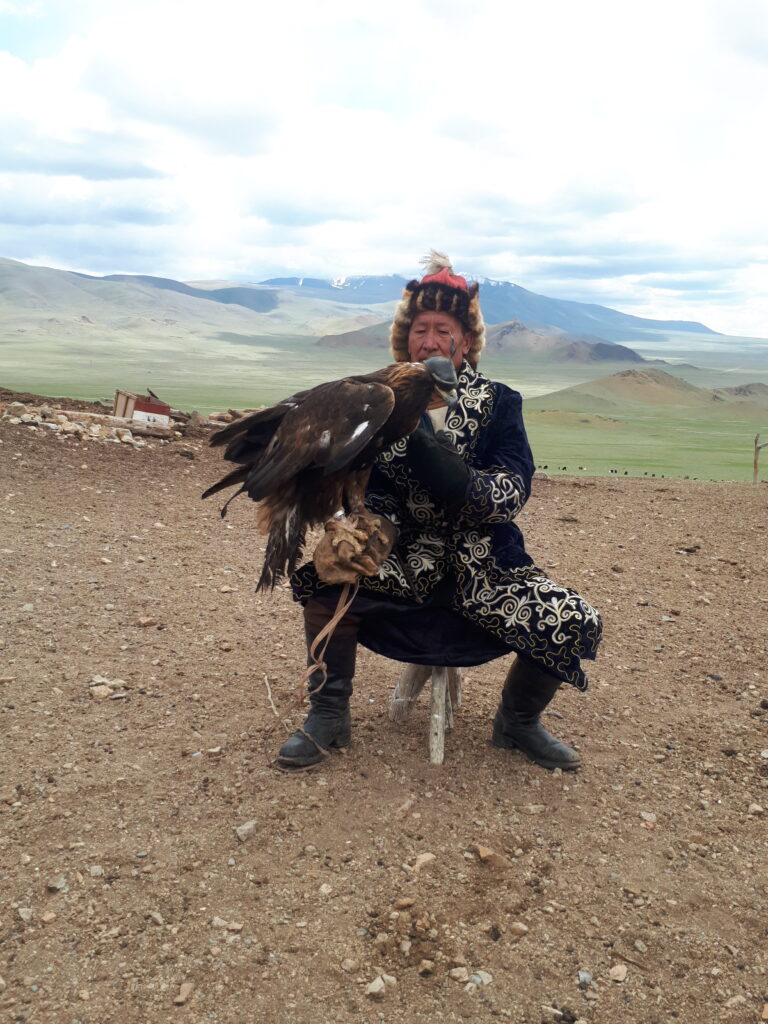
Best Time for Eagle Hunting Tours
Seasonal Timing: The best time for an eagle hunting tour in western Mongolia is during the winter months, from October to March. This period is preferred because the colder weather helps in the preservation of the fox’s fur, which is the primary target of the hunt. Additionally, the winter landscape provides a stark and beautiful backdrop for the hunting activities, making it an ideal time for visitors to experience this traditional practice.
Tourism Considerations: Tours are often arranged around the annual eagle hunting festivals, such as the Golden Eagle Festival, which typically takes place in early October in the town of Ölgii. These festivals attract eagle hunters from across the region and offer a spectacular showcase of the hunting tradition.
Utilization of the Fox
Fox Skin: After a successful hunt, the fox’s skin is carefully removed and processed. The fur is highly valued and is often used to make traditional clothing, such as hats, coats, and decorative items. The quality of the fox fur can significantly influence its market value, and skilled furriers are sought after to prepare the pelts.
Fox Meat: The meat of the fox is used in various ways. In some cases, it may be consumed by the hunter or shared with the local community. It can be cooked or preserved for later use. Traditionally, fox meat is less commonly consumed compared to other types of game, but it still plays a role in the diet of some Kazakh families.
Cultural and Social Aspects
Rites and Ceremonies: Eagle hunting is deeply embedded in Kazakh culture, and various rites and ceremonies are associated with it. These include rituals performed before and after hunts, which are meant to honor the eagle and the natural forces involved. The bond between the hunter and the eagle is celebrated in songs, stories, and art.
Intergenerational Knowledge: The art of eagle hunting is passed down from generation to generation. Young Kazakhs are trained by their elders, learning the skills and traditions associated with eagle hunting. This passing of knowledge ensures the continuation of this ancient practice and reinforces the cultural heritage of the Kazakh people.
Modern Adaptations: While traditional methods remain central to eagle hunting, modern adaptations and innovations have also been incorporated. This includes the use of technology for tracking eagles and documenting hunts. However, these modern elements are integrated into the traditional framework, preserving the essence of the practice.
Kazakh eagle hunting is a profound cultural tradition that intertwines human skill, respect for nature, and the majestic presence of the golden eagle. From its historical roots to its present-day practices, eagle hunting remains a vibrant and integral part of Kazakh life in western Mongolia. For those interested in experiencing this unique tradition, participating in an eagle hunting tour offers a rare opportunity to witness a centuries-old practice that continues to thrive in the heart of the Altai Mountains.
